Rural children love to eat cicada monkeys in the end how to raise?
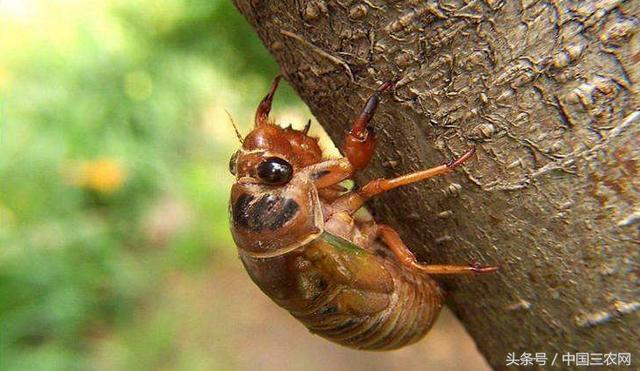
1. Obtain the provenance. The primary provenance can be collected naturally in the field, and eggs, nymphs and adults can be collected as provenances. Various insect states can be collected from July to September, nymphs can be collected from August to September, and cicada egg branches can be collected in September, which can be collected all the year round.
The ideal place where there are many dense cicadas can be selected for egg collection. The 1-2-year-old thin withered strips on the tree that are killed by grasshopper cicadas are easily removed with fruit branch shears or long hooked poles at the top of the cicada. cicadas eggs are those whose one side is flat and dry and the surface is incomplete, and the subcutaneous xylem is embedded with a large number of milky long oval eggs, cutting off the superfluous withered shoots in the upper part of the spawning nest and leaving 10 centimeters and 15 centimeters of eggless branches in the lower part of the spawning nest mark. Tie about 50 pieces into a small bundle and put them in a plastic bag for use. The nymphs were captured, and the naturally mature old nymphs were taken as the object. The nymphs could be captured by flashlight at the base of the tree trunk at 7: 12 in the evening; after collection, they were put into a cage to feather and lay eggs. Shrubby hosts are planted in spawning cages, mainly a variety of fruit trees.
There are many ways to catch cicadas on trees, such as using fire to trap them at night. In order to ensure that the adult cicada is not damaged, wheat gluten can be used. The method is to rinse the harmonious dough with water many times, remove starch, leave pure gluten, stick to the top of the bamboo pole, and catch adults in the early morning or during the day. The collection of spawning branches should be taken as the main way to obtain provenance.
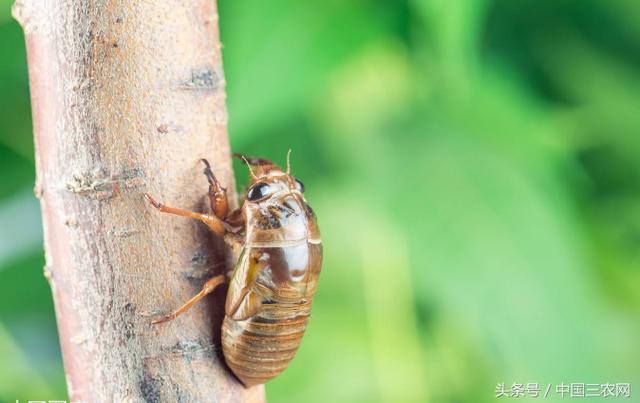
two。 Golden cicadas breed. The breeding objects are newly hatched nymphs and eggs close to hatching. The egg-bearing branches collected directly from the wild or in the provenance site are concentrated indoors to promote hatching. Hatching method: in the plastic box which is 70 cm long, 40 cm wide and 20 cm high, spread fine dry sand 5 cm to 10 cm thick at the bottom, put the egg branches vertically or horizontally on them, and constantly spray fog water with a small sprayer to maintain the high humidity of the air around the egg-bearing branches and make the excess water droplets adsorb in the fine sand at the bottom. In the middle, the hatching of eggs should be checked constantly, and when nymphs are found, the branches together with fine sand can be placed in the breeding site.
The breeding time is generally from September to October (biennial eggs) or June to July (current year eggs). The ground under the host plant in the breeding place is about 1 meter away from the base of the trunk, digging regular narrow trenches with a depth of about 30 to 50 centimeters, such as ring, square, triangle, parallel or radiation, for the purpose of digging and harvesting in the future. The back cover soil of "breeding seed" is compacted, and the time, quantity, groove shape and depth of "breeding seed" are recorded.
From the egg stage to the growth and development of mature nymphs (cicadas), cicadas need to grow underground for three winters and summers (actually 2 years): the first year begins in June, the growth weight is only about 1 gram, and the whole body and eyes are milky white; in the second year, the body weight grew to about 3 grams, the whole body pigment deepened, and the eyes were pink. For three years, the nymph (cicada turtle) is mature, weighing 4.5 ~ 5 grams, with an average of 210 per kilogram, when the body color is brown and the eyes are dark gray. The time and age of nymph growth and development can be accurately judged according to the size of body weight, the depth of body color and the change of eye color.
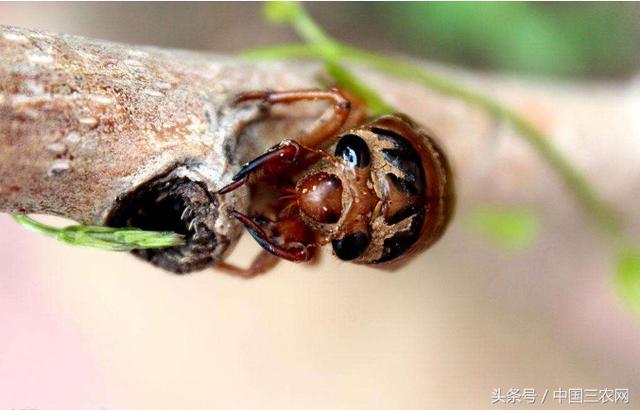
3. Supply high quality feed. Choose healthy tree species with developed roots, luxuriant growth and more juice, such as poplar, elm, willow, paulownia or all kinds of fruit trees in the orchard. In addition, but also intercropping some rhizome plants, such as potatoes, sweet potatoes, yams and so on.
4. Provide good environmental conditions. The "breeding" depth of grasshopper cicada should be 30cm to 50cm. It should be sunny and frostproof, the soil should be soft, fertile and pollution-free; it should not be too dry, nor should it have too high water content or stagnant water, so as to ensure the normal growth and development, tender, developed and succulent root system of host plants. In winter, wheat straw, rice straw and corn straw should be covered in the breeding area to maintain the ground temperature.
5. Build production facilities for adults and nymphs. In addition to the natural collection of cicada eggs, a screen greenhouse can be established to provide space for adults to lay eggs. The fruit trees in the abandoned orchard can be used to replant fruit tree seedlings, surrounded by cement columns or bamboo sticks to form a fence, and then set up iron wire in the middle, which can be covered with nylon window screen. Eclosion or collection of adults in which they mate and lay eggs, the number of adults can be retained as needed in the future, and there is no need to collect provenances from the wild.
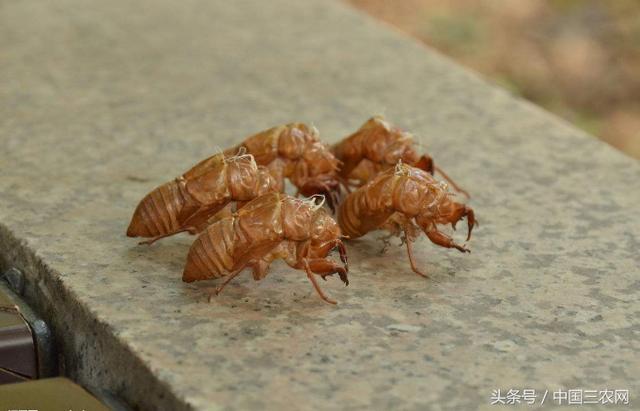
6. Do a good job in epidemic prevention. Unearthed nymphs (cicadas) and adult natural enemies after Eclosion, such as toads, snakes, rodents, hedgehogs, wild cats, sparrows and mantis all like to eat nymphs (cicadas). Beauveria bassiana, Beauveria bassiana and entomogenous algae (cicadas) are also parasitic. In addition, the pollution of floods and pesticides and chemical fertilizers do great harm to nymphs (cicadas) or cicadas, which should be paid attention to and protected when breeding.
The most important seasons are the egg stage on the tree, the occurrence period of "cicada ants" and the unearthed period of mature nymphs. The natural enemies of egg stage and cicada ant occurrence period on trees are mainly ants and red flower bugs. The treatment measures are to use 100-fold solution of strong ammonia to wash egg branches or DDVP, strong chlorine and so on for soil treatment.
- Prev
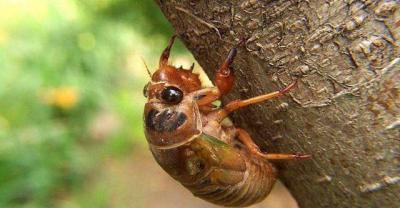
The correct way to cultivate rich trees. Only in this way can we make a fortune.
The rich tree is a kind of potted plant commonly raised by everyone, with good meaning, such as attracting wealth and treasure, good fengshui, etc., which can be raised in the office and at home, but there are many.
- Next
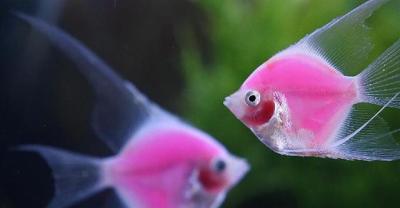
In-depth understanding of the meaning of impatiens so that the cultured leaves are greener.
Impatiens in the folk is also known as peach red or henna, they have a long history in China, and now the friends who plant this kind of flowers are better than.
Related
- On the eggshell is a badge full of pride. British Poultry Egg Market and Consumer observation
- British study: 72% of Britons are willing to buy native eggs raised by insects
- Guidelines for friendly egg production revised the increase of space in chicken sheds can not be forced to change feathers and lay eggs.
- Risk of delay in customs clearance Australia suspends lobster exports to China
- Pig semen-the Vector of virus Transmission (4)
- Pig semen-the Vector of virus Transmission (3)
- Five common causes of difficult control of classical swine fever in clinic and their countermeasures
- Foot-and-mouth disease is the most effective way to prevent it!
- PED is the number one killer of piglets and has to be guarded against in autumn and winter.
- What is "yellow fat pig"? Have you ever heard the pig collector talk about "yellow fat pig"?

